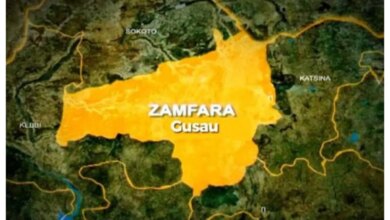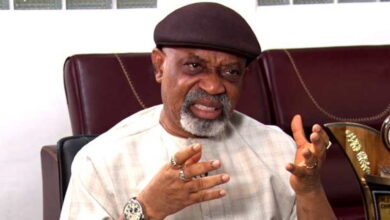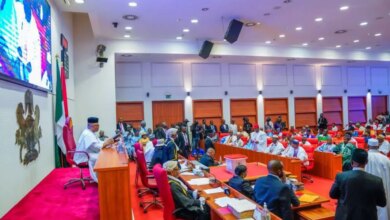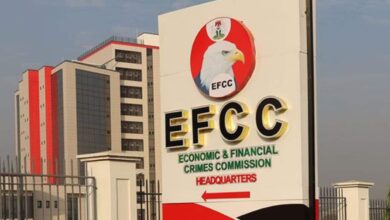IATF2025: The $48bn wake-up call for Africa’s trade agenda
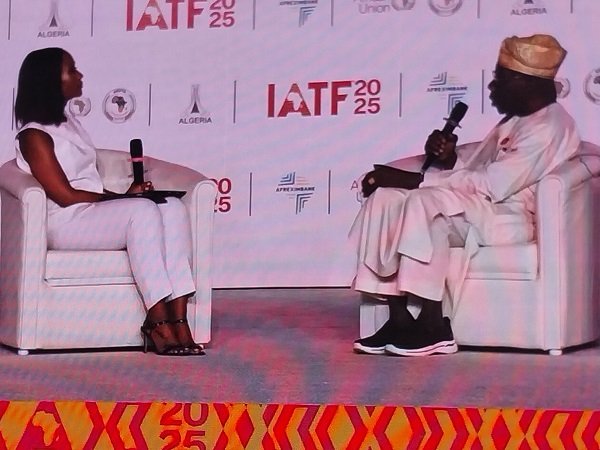
When the curtain fell on the Intra-African Trade Fair (IATF2025) in Algiers, the atmosphere was charged with optimism. A record-breaking $48.3 billion in trade and investment deals had been sealed over the week-long gathering, the largest in the fair’s history.
More than 112,000 participants from 132 countries had walked its halls, where over 2,100 exhibitors—from automotive manufacturers to fashion entrepreneurs—showcased the continent’s ingenuity.
But behind the numbers lies a bigger story: Africa’s awakening to the power of trading with itself.
For decades, the continent has looked outward to Europe, Asia, and the United States for markets and investment. Today, as global uncertainties mount and old partnerships falter, a different reality is sinking in. Africa’s prosperity cannot be outsourced. It must be built from within, through stronger regional integration, diversified industries, and a robust system of intra-African trade.
The promise of AfCFTA
In 2024, Intra-African trade grew to $208 billion, up 7.7 per cent from the previous year, according to the African Export-Import Bank (Afreximbank). The African Continental Free Trade Area (AfCFTA), now in its implementation phase, has been a decisive factor.
By lowering barriers, simplifying rules of origin, and expanding cross-border opportunities, the AfCFTA is giving African businesses a reason to look next door before looking overseas.
Still, the progress is uneven. Southern Africa led the way with $58.1 billion in intra-African trade, followed closely by West Africa ($52.8 billion). East Africa ($46.8 billion), North Africa ($31 billion), and Central Africa ($19.4 billion) lag behind. South Africa remains the heavyweight, responsible for a quarter of all intra-African exports, while Egypt and Nigeria are critical players.
The numbers tell a story of potential but also of unfinished business. Despite its growth, intra-African trade still accounts for less than 20 per cent of Africa’s total commerce, far below Asia (about 60 per cent) or Europe (nearly 70 per cent).
Why intra-African trade matters
The urgency of deepening trade within Africa becomes clear when looking at global dynamics. Africa’s exports to the rest of the world rose nearly 10 per cent in 2024 to $682 billion, thanks largely to stable commodity prices. But dependence on commodities and external markets remains a dangerous gamble.
“Everything on the economic ground is weighted against us,” former Nigerian President Olusegun Obasanjo warned at IATF2025. He urged African nations to stop relying on institutions like the International Monetary Fund and instead embrace their collective strength.
His point is hard to ignore. When the global economy sneezes—be it from war in Ukraine, tensions in the Middle East, or a slowdown in China—Africa catches the cold. External shocks ripple through markets, driving up costs, choking supply chains, and threatening livelihoods.
The alternative is building resilience from within. By boosting trade among African nations, the continent can cushion itself against these shocks, create jobs, and keep more of its wealth circulating at home.
Breaking bottlenecks
For African businesses, the challenges are as real as the opportunities. Moving goods across the continent can still feel like navigating an obstacle course. Trucks often face long delays at borders, sometimes forced to exit Africa entirely before re-entering. Inconsistent standards, high transaction costs, and bureaucratic red tapes suffocate small and medium-sized enterprises, the very backbone of Africa’s economy.
Afreximbank solutions
Afreximbank is stepping in with solutions. Its new Transit Guarantee Scheme allows a single transit bond to cover long-distance cargo movement, such as the Cape-to-Cairo route. The initiative could save an estimated $300 million annually by cutting transaction costs and reducing delays.
Another bottleneck is quality assurance. Without adequate certification facilities, African producers struggle to access continental markets, let alone compete globally.
To address this, Afreximbank is rolling out Africa Quality Assurance Centres, the first of which is already operational in Ogun State, Nigeria. More are planned for Kenya and beyond.
The automotive example
Few sectors illustrate the stakes as clearly as the automotive industry. Africa spends billions each year importing used cars from outside the continent, draining resources and stifling local innovation. Afreximbank has pledged $1 billion to jumpstart Africa’s automotive sector, with a focus on local production, job creation, and reducing imports.
This effort aligns with AfCFTA’s vision of building competitive regional value chains. By producing vehicles and components within Africa, the continent not only reduces its dependence on imports but also creates jobs for its rapidly growing youth population.
Local power, global impact
“The AfCFTA provides the framework, IATF provides the marketplace, and African Sub-Sovereign Governments Network (AfSNET) is the bridge between local power and continental impact,” Wamkele Mene, Secretary-General of the AfCFTA Secretariat, said.
Mr Mene’s words capture a critical truth: integration will not succeed if driven from the top alone. Municipalities, provinces, and states must also take centre stage. Local governments are uniquely placed to foster cross-border industrial clusters, expand infrastructure, and include small businesses and informal traders—many of them women—in the continental economy.
At the IATF2025’s African Sub-Sovereign Governments Network (AfSNET) Investment Conference, Mr Mene urged regional leaders to make youth and women central to development strategies. He also called for public–private partnerships to mobilise capital for infrastructure and industrial parks. In short, Africa’s integration must be built from the ground up.
Culture, creativity, and connection
Trade is not just about goods. It is also about ideas, culture, and identity. The Creative Africa Nexus (CANEX), a highlight of IATF2025, put fashion, film, music, art, and gastronomy on centre stage. These industries not only generate revenue but also shape the image of Africa in the world and strengthen the bonds among Africans themselves.
Events like CANEX and the Africa Automotive Show remind us that intra-African trade is about more than economics. It is about pride, creativity, and ownership of the continent’s narrative.
Call for unity
Former President Obasanjo’s fiery intervention at the fair captured the spirit of urgency: “Africa can’t outsource its development.”
His call for visa-on-arrival policies, an African Union passport, adoption of the Pan-African Payment and Settlement System (PAPSS), and investment in coastal shipping routes is more than rhetoric.
Prof. Benedict Oramah, President and Chairman of the Board of Directors, African Export-Import Bank (Afreximbank), also hit the nail on the head by stating that Africa’s economic future depends on empowering cities, provinces, and regions rather than relying solely on national governments.
These are practical steps that could transform the way Africans do business with each other.
Global partners will always matter. The European Union remains Africa’s largest trading partner, representing 31 per cent of exports and 29 per cent of imports, followed by China at 18.3 per cent of imports and 12.6 per cent of exports. But as long as Africa leans so heavily on others, its growth will remain vulnerable.
The continent has everything it needs: resources, people, creativity, and ambition. What it lacks is the deep, consistent commitment to trade with itself.
The road ahead
The success of IATF2025 is proof that Africa is capable of rising to the challenge. Deals worth $48.3 billion are not just statistics, they represent factories to be built, roads to be paved, jobs to be created, and families to be sustained.
Yet the fair must be seen not as an endpoint, but as a springboard.
To unlock its full potential, Africa must:
• accelerate industrialisation,
• move beyond commodities into higher-value goods,
• invest in infrastructure—from roads to digital platforms that ease cross-border trade,
• empower local authorities—giving states and municipalities the tools to foster inclusive growth,
• adopt enabling policies such as AfCFTA’s rules of origin and PAPSS for seamless payments,
• and champion cultural industries—making creativity part of the trade equation.
The question is no longer whether Africa should promote intra-African trade, it is whether the continent can afford not to.
In a world where global markets are unpredictable, where foreign institutions were never designed with Africa in mind, the answer is clear.
To build resilience, create jobs, and claim its rightful place in the world, Africa must look inward and trade with itself.
The seeds have been planted in Algiers. The challenge now is to nurture them into a harvest that will sustain generations. The expectation is that the next Intra-Africa Trade Fair to be hosted by Nigeria in Lagos will chalk more successes.
The writer is the Deputy Editor, Ghanaian Times
“Deals worth $48.3 billion are not just statistics, they represent factories to be built, roads to be paved, jobs to be created, and families to be sustained.”
BY DAVID ADADEVOH
🔗 Follow Ghanaian Times WhatsApp Channel today. https://whatsapp.com/channel/0029VbAjG7g3gvWajUAEX12Q
🌍 Trusted News. Real Stories. Anytime, Anywhere.
✅ Join our WhatsApp Channel now! https://whatsapp.com/channel/0029VbAjG7g3gvWajUAEX12Q


